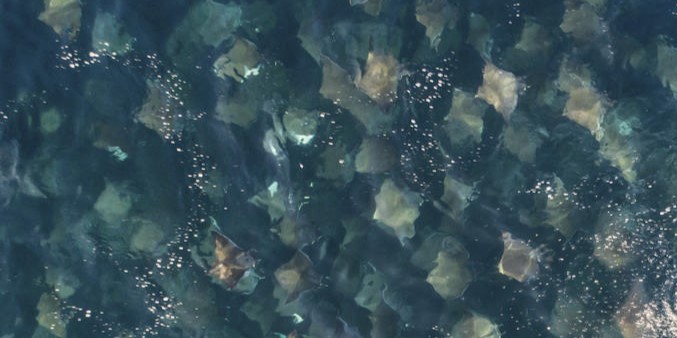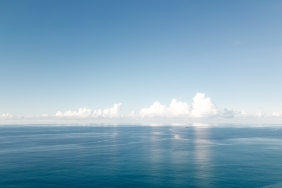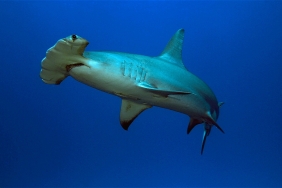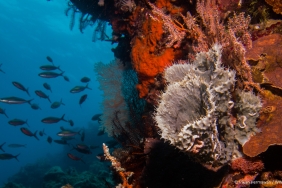DEVIL RAY MYSTERY
Have you ever heard of devil rays? What comes to mind when you describe the body shape of a devil ray? Resembling a demon? Your guess is not wrong, the devil ray, which is still in the same tribe as the manta ray in the mobulidae tribe, has prominent horns. The horns are visible when the lobe of the head is rolled up.
Devil rays spend a lot of time in the open ocean, although they also occasionally visit the coast. They are also known to be powerful divers, able to dive to depths of up to two kilometers and enjoy swimming on the surface of warm water. However, there is little information available on these rays, which have a wide distribution in tropical and subtropical waters and are therefore listed as data-deficient on the IUCN list (http://www.iucnredlist.org/details/60199/0).
December 2013 was the first encounter of the Teluk Cenderawasih National Park (TNTC) monitoring team with devil rays (Mobula tarapacana). At that time the team was monitoring resource utilization in Nabire waters, but was stopped short when they found the body of a devil ray on Kumbur Island, which is included in the core zone.
The condition of the devil ray found at that time was quite pathetic, because its 'wings' had been eaten by fishermen who took shelter due to bad weather. Only the head and entrails were left on the beach. The tip of the head to the tip of the tail is about 1.7 m long, so it is suspected that the wingspan can reach 2 m.
Mysterious existence
In March 2015, the monitoring team encountered the devil ray for the second time. This time was different, the devil rays were still in one piece. Two devil rays with a wingspan of approximately 50 cm were found trapped in a bagan net in Kwatisore Waters. After being appealed to, the fishermen finally released the two rays.
Most of the seven bagan fishermen in Kwatisore waters said that the devil ray, commonly called 'pasa' by Bugis, Buton and Makassar bagan fishermen, is rarely seen. They only occasionally see them passing by, and do not dare to fish for these large rays, as they will only break their fishing lines. Devil rays are thought to have returned to Nabire waters, especially in front of Kwatisore Village, between February-March this year.
Bagan fishermen say that devil rays usually enter bagan nets at night when fishermen lower their nets to catch small pelagic fish, which are the target of bagan. The rays are seen chasing small fish, just like whale sharks. This is in accordance with Notarbartolo-di-Sciara (1988) who stated that these rays are fish-eaters.
Could it be that devil rays visit Kwatisore's waters to give birth?
Based on interviews with bagan fishermen, the devil rays encountered during these months are mostly small (wingspan around 50 cm) with a few large individuals.
The wingspan for adult males is about 240-250 cm and that of females is about 270-280 cm. The maximum wingspan of devil rays is 370 cm (Compagno and Last, 1999). Meanwhile, female rays can only give birth to one pup (Notarbartolo-di-Sciara, 1988). It is unanswered whether devil rays return to give birth or not.
Author: Cassandra Tania (Marine Species Officer)





